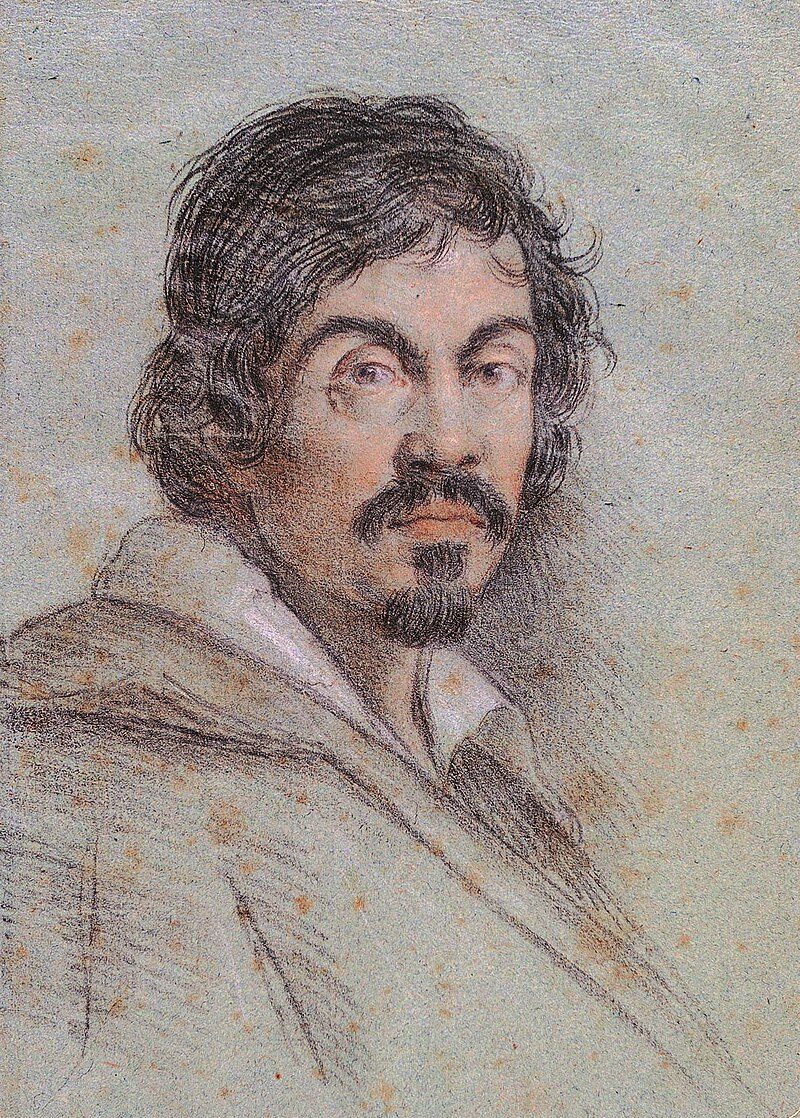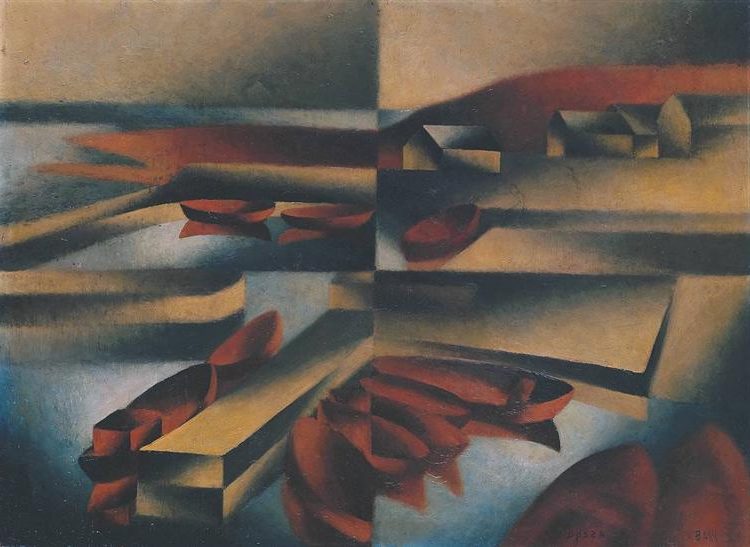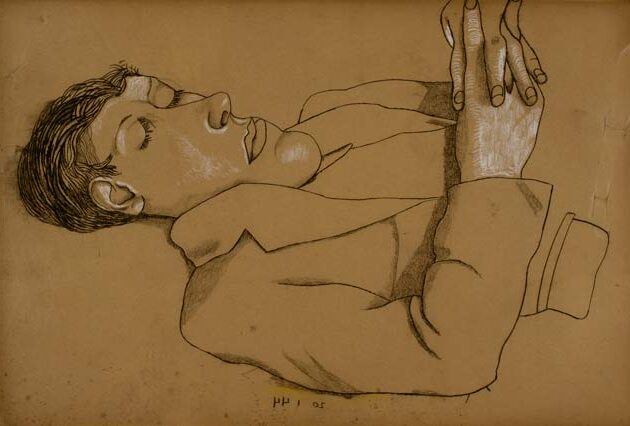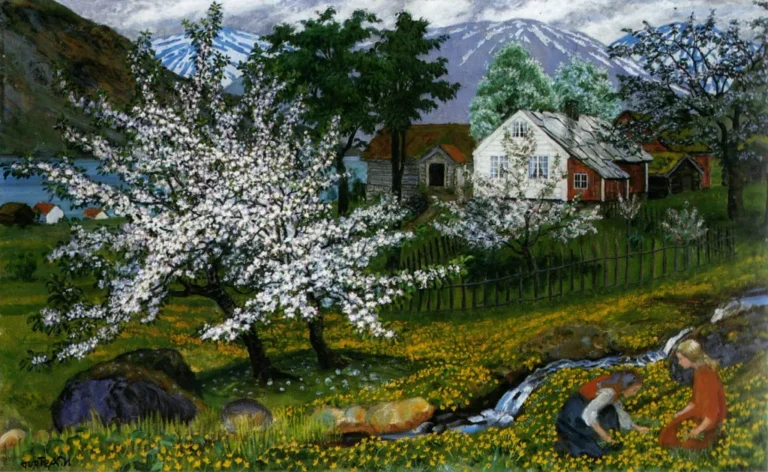Caravaggio (Michelangelo Merisi) Painter: The Revolutionary Master of Light and Shadow
Born: September 29, 1571; Milan, Italy
Death: July 18, 1610; Porto Ercole, Italy
Art Movement: Baroque
Nationality: Italian
Influenced By: Giorgione, Titian
Caravaggio (Michelangelo Merisi) Painter: The Revolutionary Master of Light and Shadow
Life and Career of Caravaggio
Caravaggio’s relatively short life was marked by extraordinary artistic brilliance and personal turmoil. His revolutionary painting style and turbulent existence created a legacy that continues to fascinate art lovers centuries after his death.
Early Life in Milan
Michelangelo Merisi da Caravaggio was born in Milan in 1571 to Fermo Merisi, who worked as a household administrator and architect-decorator for the Marchese of Caravaggio. This connection later influenced the artist’s adopted name.

Musicians (c.1595) by Caravaggio
Tragedy struck early when Caravaggio was orphaned at age 11, a pivotal event that shaped his difficult character. Soon after, he began his artistic training as an apprentice to a painter in Milan.
The young artist’s formative years in Milan provided him with fundamental artistic skills, though little of his early work survives. This period established the technical foundation for his later revolutionary approach to painting.
Artistic Development in Rome
Caravaggio moved to Rome around 1592, where his unique artistic vision began to flourish. Initially, he struggled financially and painted small works depicting fruits, flowers, and young boys.
His breakthrough came when Cardinal Francesco del Monte recognized his talent and became his first important patron. Under the Cardinal’s protection, Caravaggio gained access to influential circles and secured significant commissions.
In Rome, he developed his signature style characterized by dramatic lighting, intense realism, and emotional directness. His technique of tenebrism—strong contrasts between light and dark—created theatrical effects that dramatically influenced European painting.
Caravaggio rejected idealization, instead portraying biblical scenes with ordinary people as models. This revolutionary approach shocked contemporaries but attracted progressive patrons who appreciated his bold innovations.
Notable Patrons and Commissions
Despite his difficult personality, Caravaggio secured important commissions from powerful patrons. The Contarelli Chapel in San Luigi dei Francesi contains his masterful series on Saint Matthew, which established his reputation.

The Calling of Saint Matthew (1599–1600) by Caravaggio
The “Death of the Virgin” (1606) exemplifies his controversial approach. The painting was rejected by the Carmelites who commissioned it because Caravaggio depicted the Virgin with realistic signs of death and used a drowned prostitute as his model.
Other major works include “The Calling of Saint Matthew” and “The Conversion of Saint Paul,” both displaying his revolutionary use of light and psychological intensity. These paintings dramatically transformed religious art with their immediacy and emotional power.
Conflict and Exile
Caravaggio’s violent temperament frequently landed him in trouble. Court records show he was involved in numerous brawls, assaults, and legal disputes throughout his time in Rome.
The turning point came in 1606 when he killed Ranuccio Tomassoni during a heated dispute, possibly over a tennis match or gambling debt. This murder forced Caravaggio to flee Rome with a price on his head.
During his exile, he found protection from the powerful Colonna family. He traveled to Naples, Malta, and Sicily, continuing to paint masterpieces despite his fugitive status.
In Malta, he was briefly celebrated and made a Knight of Malta, but was soon imprisoned after another violent altercation. He escaped and continued his restless travels.
Final Years and Death
Caravaggio’s final years were marked by paranoia and desperation. He constantly looked over his shoulder, fearing assassins while continuing to produce remarkable paintings that showed increasing psychological darkness.
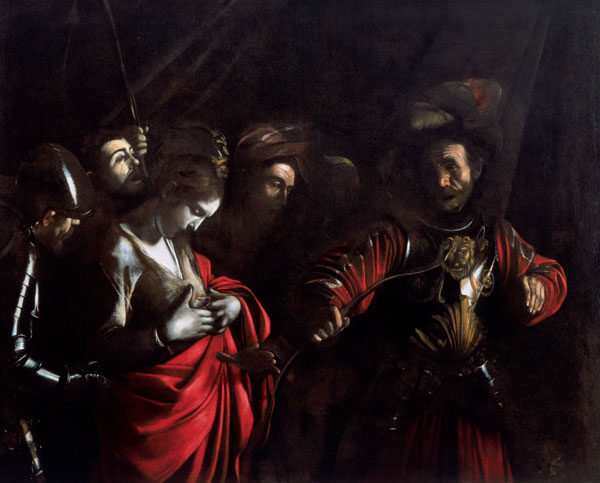
The Martyrdom of Saint Ursula (1610) by Caravaggio
In Naples, he survived a violent attack that left his face disfigured. Despite this trauma, he created some of his most moving works, including “The Denial of Saint Peter” and “The Martyrdom of Saint Ursula.”
In 1610, believing he had secured a papal pardon, Caravaggio set out for Rome. However, he died under mysterious circumstances on July 18, 1610, at Porto Ercole. He was only 38 years old.
Recent research suggests he may have died from lead poisoning from his paints, though other theories include malaria or wounds from his final violent encounter. Regardless of cause, his death ended one of art history’s most turbulent and influential careers.
Artistic Style and Techniques
Caravaggio revolutionized painting in the late 16th and early 17th centuries through his dramatic use of light and commitment to realistic depictions. His innovative techniques created a new visual language that broke from idealized Renaissance traditions.
Innovations in Chiaroscuro
Caravaggio mastered chiaroscuro—the technique of using strong contrasts between light and dark—to create dramatic effect. Unlike his predecessors, he developed a more extreme version that art historians often call “tenebrism.” This approach featured intense spotlighting of figures against dark backgrounds.
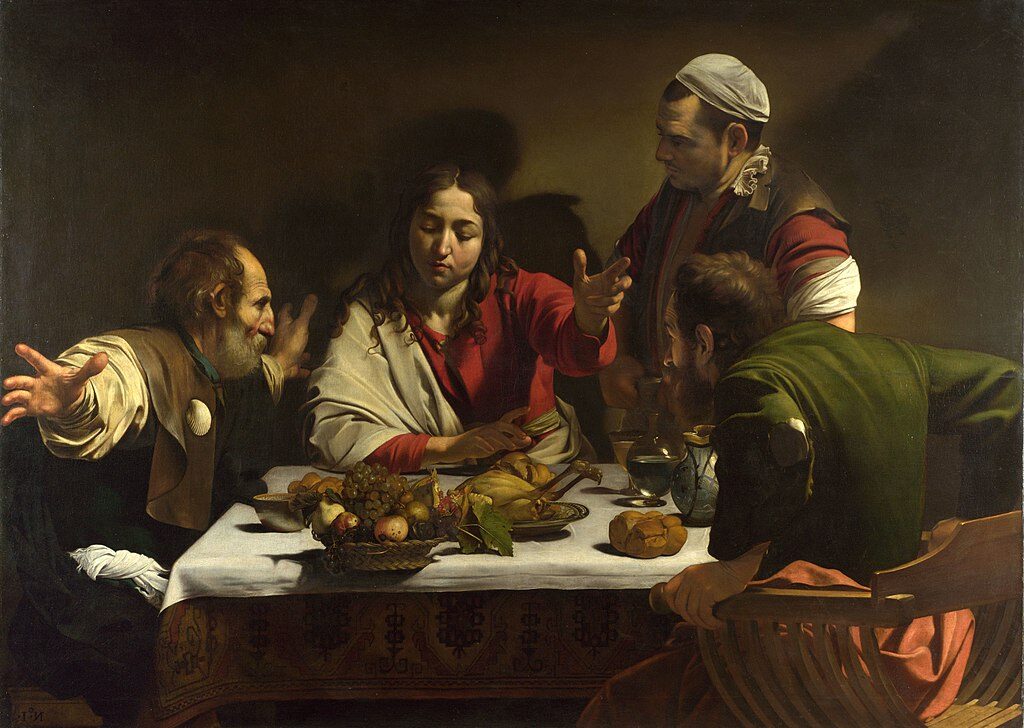
Supper at Emmaus (1601) by Caravaggio
In works like “The Supper at Emmaus,” he used this technique to highlight emotional expressions and important narrative elements. The light in his paintings doesn’t gradually fade but creates sharp divisions between illuminated subjects and shadowy surroundings.
Caravaggio typically painted directly on canvas without preliminary drawings. He used focused, directional light sources that create the illusion of three-dimensional space while drawing viewers’ attention to specific details.
Themes of Realism and Naturalism
Caravaggio rejected idealized beauty in favor of unfiltered realism. He painted subjects with all their physical imperfections—dirty fingernails, wrinkles, and weathered skin.
For models, he used ordinary people from the streets of Rome. In “Boy with a Basket of Fruit” and “Young Sick Bacchus,” he presented figures with unprecedented naturalism.
His still-life elements showed remarkable attention to detail. The fruit in “Bacchus” displays subtle bruising and imperfections that reflect actual objects rather than idealized versions.
Religious scenes were staged with contemporary figures in modern dress. This approach brought sacred stories into the present day, making them more relatable to viewers.
The Impact on Italian Painting
Caravaggio’s style sparked a revolution in Italian painting that spread throughout Europe. His followers, known as the Caravaggisti, adopted his dramatic lighting techniques and realistic approach.

Cardsharps (I Bari) (c.1594) by Caravaggio
Works like “The Cardsharps” and “Boy Bitten by a Lizard” influenced a generation of artists who appreciated his ability to capture psychological tension through light and realistic detail.
His break from Mannerism and classical ideals challenged artistic conventions. Major painters including Artemisia Gentileschi, Georges de La Tour, and Rembrandt developed their styles in response to his innovations.
Caravaggio’s influence extended beyond his lifetime. His techniques continued to inspire artists for centuries, particularly those interested in dramatic storytelling through visual means.
Masterpieces and Legacy
Caravaggio’s revolutionary artistic style left an indelible mark on Western art. His dramatic use of light and realistic depictions of human figures transformed painting during the Baroque period and continues to influence artists today.
Significant Works and Their Influence
“The Calling of Saint Matthew” (1599-1600) remains one of Caravaggio’s most celebrated works, showcasing his mastery of chiaroscuro—the dramatic contrast between light and shadow. His “Beheading of Saint John the Baptist” (1608) is the only painting he ever signed, written in the pool of blood flowing from the saint’s neck.
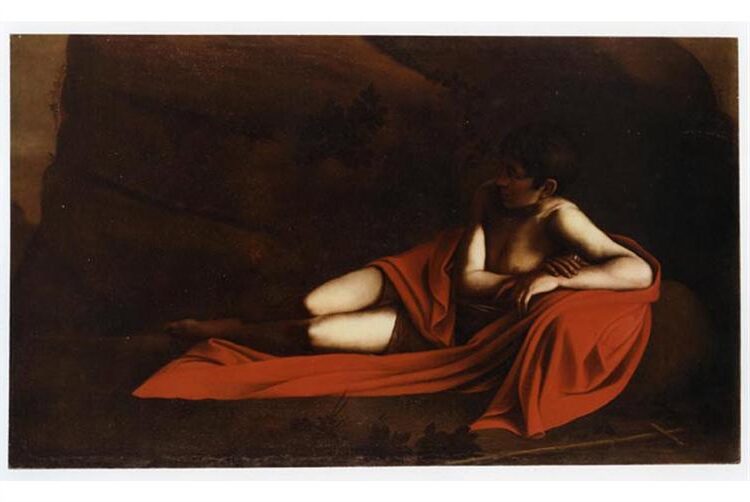
John the Baptist (Reclining Baptist) (1610) by Caravaggio
“The Death of the Virgin” (1606) caused controversy for its realistic portrayal of death—the Virgin appears as a common woman rather than idealized. Critics rejected it for a church commission, but it later became highly regarded.
“David with the Head of Goliath” (1610) is particularly haunting as Caravaggio painted his own face on Goliath’s severed head, creating a disturbing self-portrait reflecting his troubled final years.
“The Seven Works of Mercy” demonstrates his ability to capture multiple narratives in a single dramatic scene, while “The Fortune Teller” established his skill in depicting everyday street scenes.
Caravaggio’s Impact on Future Generations
Caravaggio’s influence spawned a movement known as Caravaggism that spread throughout Europe. Artists like Artemisia Gentileschi, Georges de La Tour, and Rembrandt adopted his dramatic lighting techniques and emotional intensity.
His psychological depth and uncompromising realism challenged the idealized beauty of Renaissance art. Rather than depicting saints as perfect beings, Caravaggio showed them with dirty feet and weathered faces.
The term “Caravaggesque” describes art with strong contrast between light and dark. This technique became fundamental to Baroque painting and continues to influence photography and film lighting today.
His revolutionary approach wasn’t fully appreciated until the 20th century when art historians rediscovered his genius. Now he’s recognized as a pivotal figure who bridged Renaissance idealism and Baroque expressiveness.
Presence in Modern Collections
Caravaggio’s works are treasured centerpieces in the world’s finest museums. The National Gallery in London houses “The Supper at Emmaus” and “Salome with the Head of John the Baptist,” works that attract countless visitors yearly.
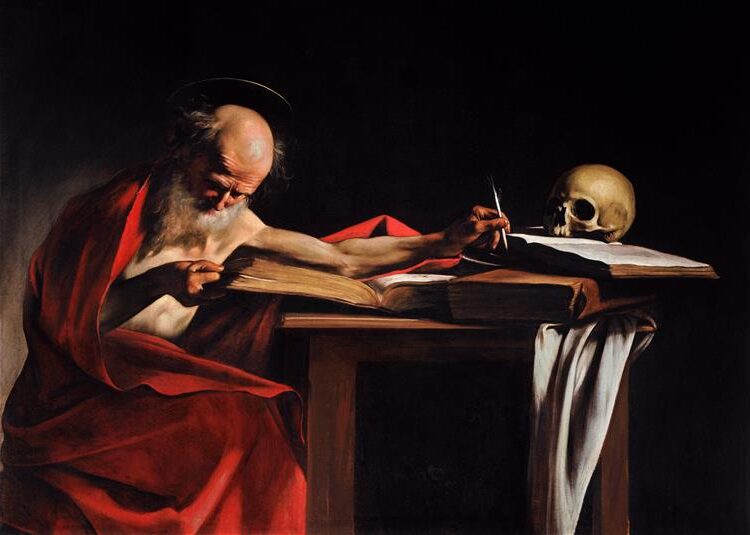
Saint Jerome Writing (c.1605) by Caravaggio
Rome’s Borghese Gallery contains his “Madonna of the Rosary” and “Saint Jerome Writing,” while the Uffizi Gallery in Florence displays his “Bacchus” and “Medusa” shield.
The Vatican Museums preserve “The Entombment of Christ,” considered one of his most powerful religious works. The Louvre in Paris holds “The Fortune Teller” and “Death of the Virgin.”
Due to his tumultuous life and early death, only about 60 Caravaggio paintings exist today. Each new discovery generates significant excitement in the art world, as happened with “Judith and Holofernes” found in an attic in Toulouse in 2014.
Frequently Asked Questions
Caravaggio’s revolutionary painting techniques and controversial life have sparked many questions among art enthusiasts. His dramatic use of light and realistic portrayals of biblical scenes transformed European art.
How did Caravaggio’s technique of chiaroscuro influence the art world?
Caravaggio’s chiaroscuro technique created dramatic contrasts between light and dark. He used this method to highlight central figures against dark backgrounds.
This revolutionary approach influenced countless artists throughout Europe. Painters like Rembrandt and Vermeer adopted similar techniques in their own works.
Caravaggio’s dramatic lighting helped create emotional intensity in religious scenes. His approach broke with idealized Renaissance traditions by bringing sacred stories into the realm of common experience.
What are the distinguishing characteristics of Caravaggio’s painting style?
Caravaggio painted with intense realism, showing subjects as they actually appeared. He often depicted ordinary people with wrinkles, dirty fingernails, and weathered faces.
His compositions featured theatrical lighting and stark backgrounds. This approach created powerful focal points and emotional depth.
Caravaggio avoided preparatory drawings, painting directly onto canvas. He positioned models under controlled lighting conditions to achieve his dramatic effects.
Can you name two major masterpieces Caravaggio created during his career?
“The Calling of St. Matthew” (1599-1600) shows Jesus summoning Matthew from a tax collector’s table. The painting’s beam of light dramatically illuminates the moment of spiritual awakening.
“The Conversion of St. Paul” (1601) depicts Paul thrown from his horse at the moment of divine revelation. The foreshortened figure of Paul lying on his back demonstrates Caravaggio’s mastery of perspective and human anatomy.
What aspects of Caravaggio’s work exemplify the Baroque period?
Caravaggio’s dramatic compositions with intense emotional content perfectly embodied Baroque sensibilities. His work rejected the balanced harmony of Renaissance art in favor of movement and tension.
He painted religious scenes with unprecedented realism and emotional power. Common people portrayed as biblical figures made sacred stories more accessible to ordinary viewers.
His use of theatrical lighting and staging created dramatic narrative moments. These techniques became defining characteristics of Baroque painting throughout Europe.
In what circumstances did Caravaggio’s life come to an end?
Caravaggio died in 1610 at age 38 while traveling along the Italian coast. He was attempting to return to Rome to receive a pardon for a murder he had committed in 1606.
His death remains somewhat mysterious. Some evidence suggests he suffered from a fever, while other accounts point to a violent altercation. Recent research indicates lead poisoning from his paints may have contributed to his death.
Caravaggio was alone and far from home when he died. His body was initially buried in an unmarked grave.
What is the significance of Caravaggio’s last painting in his artistic oeuvre?
“The Martyrdom of Saint Ursula,” painted shortly before his death in 1610, shows Caravaggio’s continued mastery of dramatic lighting.
The painting captures the exact moment when Ursula is shot with an arrow. This final work reveals a darker palette than his earlier paintings.
Art historians note its somber mood and constrained composition reflect Caravaggio’s difficult circumstances during his final years. The painting maintains Caravaggio’s commitment to emotional intensity and realism.
Even while ill and in exile, he continued pushing artistic boundaries until the very end of his life.


